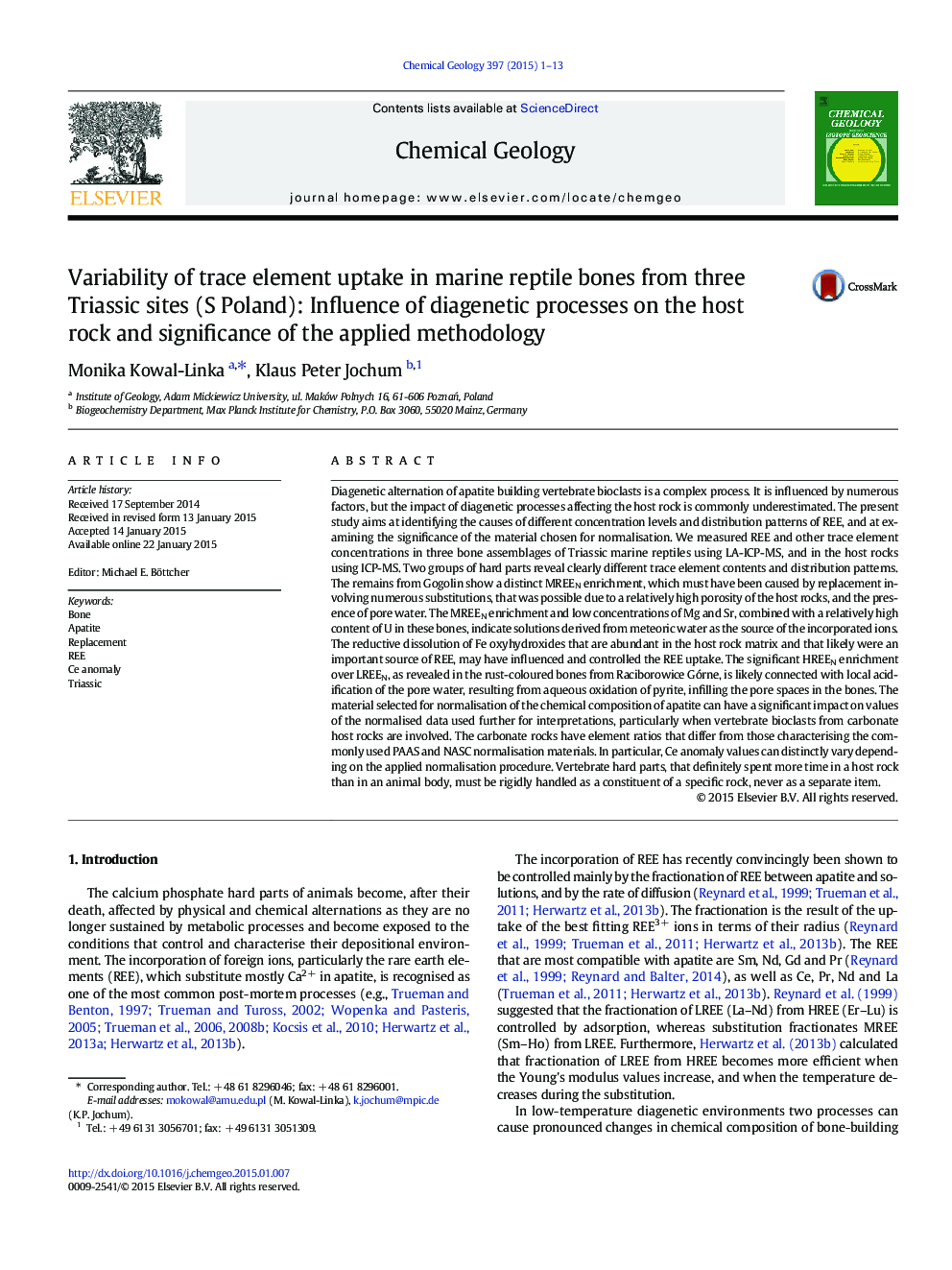| کد مقاله | کد نشریه | سال انتشار | مقاله انگلیسی | نسخه تمام متن |
|---|---|---|---|---|
| 6436439 | 1637576 | 2015 | 13 صفحه PDF | دانلود رایگان |

- Variable REE uptake by secondary apatite in three bone assemblages was investigated.
- MREE-enrichment is likely linked to replacement of bioapatite by secondary phase.
- Material chosen for normalisation can have a significant impact on Ce anomaly values.
- They can highly vary (negative vs. positive anomaly) depending on applied procedure.
- This imposes necessity of absolutely cautious use of Ce anomaly for any purpose.
Diagenetic alternation of apatite building vertebrate bioclasts is a complex process. It is influenced by numerous factors, but the impact of diagenetic processes affecting the host rock is commonly underestimated. The present study aims at identifying the causes of different concentration levels and distribution patterns of REE, and at examining the significance of the material chosen for normalisation. We measured REE and other trace element concentrations in three bone assemblages of Triassic marine reptiles using LA-ICP-MS, and in the host rocks using ICP-MS. Two groups of hard parts reveal clearly different trace element contents and distribution patterns. The remains from Gogolin show a distinct MREEN enrichment, which must have been caused by replacement involving numerous substitutions, that was possible due to a relatively high porosity of the host rocks, and the presence of pore water. The MREEN enrichment and low concentrations of Mg and Sr, combined with a relatively high content of U in these bones, indicate solutions derived from meteoric water as the source of the incorporated ions. The reductive dissolution of Fe oxyhydroxides that are abundant in the host rock matrix and that likely were an important source of REE, may have influenced and controlled the REE uptake. The significant HREEN enrichment over LREEN, as revealed in the rust-coloured bones from Raciborowice Górne, is likely connected with local acidification of the pore water, resulting from aqueous oxidation of pyrite, infilling the pore spaces in the bones. The material selected for normalisation of the chemical composition of apatite can have a significant impact on values of the normalised data used further for interpretations, particularly when vertebrate bioclasts from carbonate host rocks are involved. The carbonate rocks have element ratios that differ from those characterising the commonly used PAAS and NASC normalisation materials. In particular, Ce anomaly values can distinctly vary depending on the applied normalisation procedure. Vertebrate hard parts, that definitely spent more time in a host rock than in an animal body, must be rigidly handled as a constituent of a specific rock, never as a separate item.
Journal: Chemical Geology - Volume 397, 18 March 2015, Pages 1-13